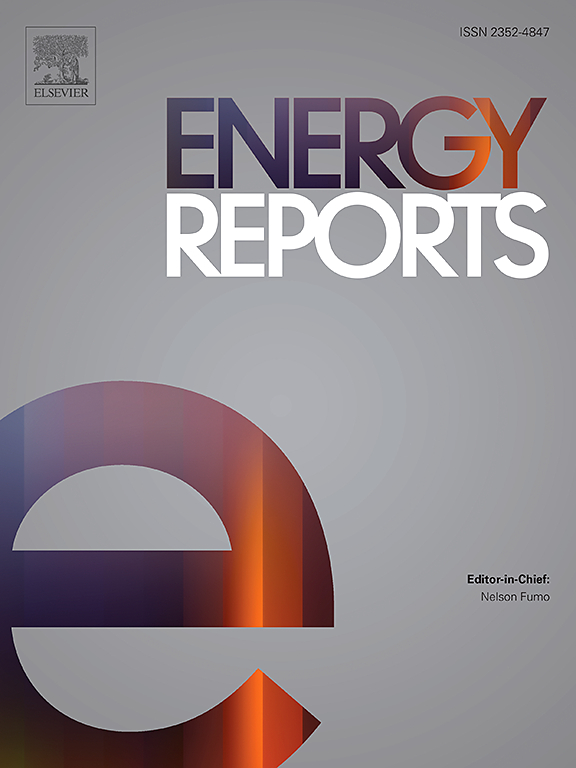使用pso增强的深度学习模型解释和预测电池健康状态的可解释人工智能
IF 5.1
3区 工程技术
Q2 ENERGY & FUELS
引用次数: 0
摘要
准确测定锂离子电池的健康状态(SOH)对电动汽车的安全运行具有重要意义。然而,在实际实现中,人为错误和操作条件等变量可能会影响SOH估计的准确性。本文提出了一种基于卷积神经网络、长短期记忆(LSTM)和卷积LSTM (ConvLSTM)模型的融合神经网络,并结合元启发式优化和可解释人工智能(XAI)对电池SOH进行准确预测。我们提出的模型将CNN、LSTM和ConvLSTM结合在一个新的过程中,由PSO优化并由SHAP解释,而之前的混合模型通常只结合两个神经网络,很少同时考虑优化和可解释性。该方法将CNN、LSTM和ConvLSTM模型集成到一个深度神经网络(DNN)框架中。利用粒子群优化(PSO)对该框架进行了优化,提高了SOH估计的通用性和准确性。此外,为了实现串行数据的时间依赖性和相关性,本文提出的数据驱动方法利用了导出的电池放电曲线中的电压分布和容量变化。实验结果表明,与CNN、LSTM、ConvLSTM等深度学习模型相比,本文提出的模型在电池SOH预测方面取得了较好的效果。此外,电池数据集的平均绝对误差(MAE)和均方根误差(RMSE)被限制在0.009%和0.044%以内。本研究利用XAI技术,即SHapley加性解释(SHAP)来澄清融合DNN模型所做的预测。该方法旨在增强系统的清晰度和信任感,研究结果表明,融合DNN模型优于传统方法,使用PSO进行优化,包括CNN, LSTM和ConvLSTM组件,它实现了更高的R2分数,更小的平均残差,并改善了XAI结果。本文章由计算机程序翻译,如有差异,请以英文原文为准。
Interpretable AI for explaining and predicting battery state of health using PSO-enhanced deep learning models
Accurately determining the State-of-Health (SOH) of Lithium-ion (Li-ion) batteries is important for the safe operation of Electric Vehicles (EVs); nevertheless, in practical implementations, variables such as human error and operational conditions can affect the accuracy of SOH estimates. This paper proposes a fusion neural network based on the Convolutional Neural Network, Long-term Short Memory (LSTM), and Convolutional LSTM (ConvLSTM) models with meta-heuristic optimization and eXplainable Artificial Intelligence (XAI) to accurately predict the battery SOH. Our proposed model combines CNN, LSTM, and ConvLSTM in a novel process, optimized by PSO and explained by SHAP, in contrast to previous hybrid models that often only combine two neural networks and rarely incorporate both optimization and interpretability. The suggested method integrates CNN, LSTM, and ConvLSTM models into a Deep Neural Network (DNN) framework. This framework is tuned using Particle Swarm Optimization (PSO) to improve the generality and accuracy of SOH estimations. Furthermore, in order to achieve serial data time dependency and correlation, the suggested data-driven approach exploits the voltage distribution and capacity changes in the derived battery discharge curve. The results of the experiment show that when compared to CNN, LSTM, ConvLSTM, and other deep learning models, the proposed model achieves good performance for battery SOH prediction. Furthermore, the Mean Absolute Error (MAE) and Root Mean Square Error (RMSE) are limited to within 0.009% and 0.044%, accordingly, on the battery dataset. This study utilizes XAI techniques, namely SHapley Additive exPlanations (SHAP), to clarify the predictions made by the fusion DNN model. This approach aims to enhance clarity and instill trust in the system, and the findings indicate that the fusion DNN model outperforms conventional approaches, optimized using PSO and including CNN, LSTM, and ConvLSTM components, and it achieves higher scores, smaller mean residuals, and improved XAI outcomes.
求助全文
通过发布文献求助,成功后即可免费获取论文全文。
去求助
来源期刊

Energy Reports
Energy-General Energy
CiteScore
8.20
自引率
13.50%
发文量
2608
审稿时长
38 days
期刊介绍:
Energy Reports is a new online multidisciplinary open access journal which focuses on publishing new research in the area of Energy with a rapid review and publication time. Energy Reports will be open to direct submissions and also to submissions from other Elsevier Energy journals, whose Editors have determined that Energy Reports would be a better fit.
 求助内容:
求助内容: 应助结果提醒方式:
应助结果提醒方式:


